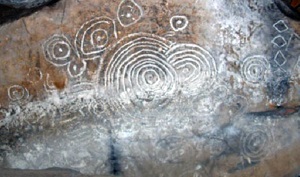Manx Gaelic language reaches for the stars
A star and planet will be given Manx Gaelic names after being chosen in an international competition. The International Astronomical Society held the competition, to name a star and planet. The winners were two classes of eight and nine-year-olds from Cronk-y-Berry school in the Isle of Man (Manx: Mannin). The star, WASP-13, will be named Gloas, the Manx for 'shine', and planet WASP-13b will be now be known as Cruinlagh, which is Manx for 'orbit'.
The children who thought of the names are following a long tradition of the Celtic peoples in taking inspiration from the stars. Megalithic monuments are to be found everywhere in the Celtic lands of northwestern Europe. They were not placed in a random way but were large ceremonial complexes constructed for specific purposes. We can deduce that astronomical alignments, both solar and lunar, were important factors in the positioning of these remarkable structures.
Stone circles, cairns, other types of ancient stone monuments and Neolithic carvings have shown the Celts to be advanced astronomers. Ancient stones and tombs are placed in a way that capture moments of astronomical importance. According to archaeologists the ancient Irish were the first to record a solar eclipse 5,354 years ago. A geometric etching illustrating the eclipse is thought to lie inside the Cairn L. This is one of the two large focal monuments on Cairnbane West outside Kells in Ireland’s County Meath. The carving of concentric circles and lines is at the back of the chamber of the cairn.
Images: Children of Cronk Y Berry school who named the star and planet. Courtesy of Manx Radio.
Solar eclipse etching on Cairn L, Cairnbane West in Ireland.
Artist’s impression of an extrasolar planet similar to WASP-13b. Courtesy of BBC Ellan Vannin









